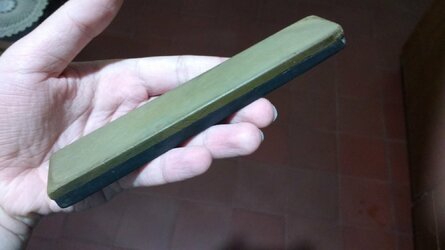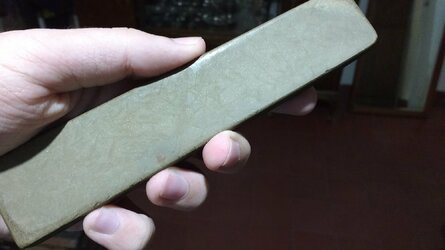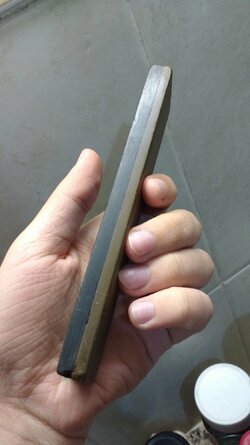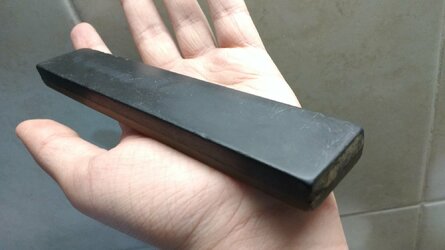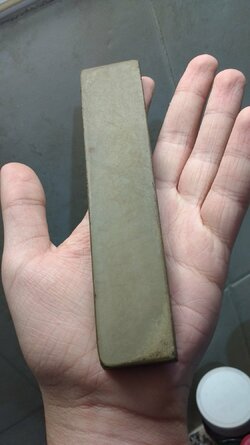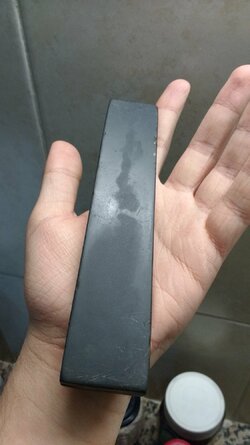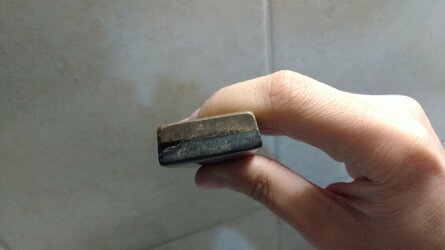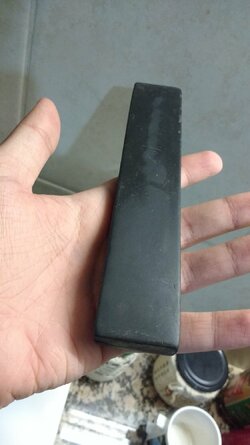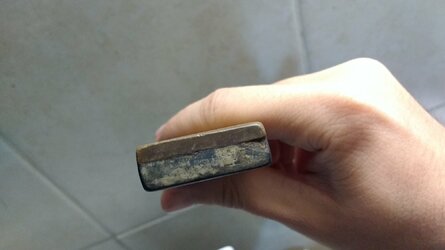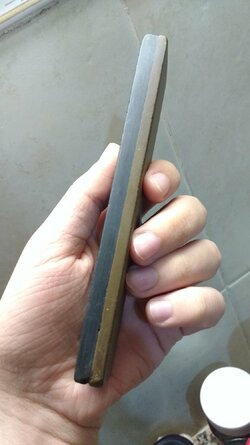Hello everyone! I saw a stone next to a straight razor on internet, when I saw it I was almost sure it was a yellow coticule, I saw it a little dark in the photos, but I assumed that it had been used with oil and that is why it had that color. When I saw the photos of the advertisement I thought it would be a double coticule. Then, the stone arrived, and then I realized that it was not a yellow coticule, it is green, it is not a double coticule either, it is stuck to a blackboard. I haven't flattened it completely yet (I need to get some supplies for that). But if I have spent maybe 1 or 2 minutes on a 1k sandpaper, something that surprised me is that the stone, despite looking old and with a lot of use, is quite "Flat" (It's not flat, but it's not warped like I would expect it to be.). Another thing worth noting is that I tried to make slurry on the stone with another yellow coticule and.... the slurry came out yellow, not at all greenish in color, it is a hard stone, or at least harder than my two coticules.
In the photos I uploaded you can see a little of the grain that the stone has. If anyone can help me know what type of stone it is and also if you can tell me where to find information about green coticules I would appreciate it (I have tried to search and there is very little information on the internet), I don't know if it is a green coticule, but I think it is possible.
In the photos I uploaded you can see a little of the grain that the stone has. If anyone can help me know what type of stone it is and also if you can tell me where to find information about green coticules I would appreciate it (I have tried to search and there is very little information on the internet), I don't know if it is a green coticule, but I think it is possible.
